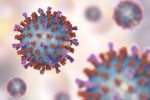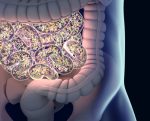Switching to Oral Orladeyo Boosts Quality of Life for Trial Patients

Switching from under-the-skin injections of Takhzyro (lanadelumab) to oral capsules of Orladeyo (berotralstat) was generally safe and kept the occurrence of swelling attacks at low rates over one year in people with hereditary angioedema (HAE), according to a new data analysis of the Phase 2/3 APeX-S trial.
“These findings suggest there are excellent reasons for patients to speak with their physicians to determine if switching to an oral prophylactic [preventive] therapy could be an option to help them reduce their burden of disease while maintaining strong efficacy,” Teresa Caballero, MD, PhD, of the allergy department at the Hospital Universitario La Paz, in Madrid, said in a press release.
These and additional results of long-term Orladeyo treatment in the Phase 3 APeX-2 trial (NCT03485911) were presented in three posters at the European Academy of Allergy and Clinical Immunology Hybrid Congress 2022, held in Prague, Czech Republic, and online July 1–3.
“From each additional analysis of our long-term data from APeX-2 and APeX-S, we continue to see more examples of the positive long-term impact our oral, once-daily prophylactic therapy is having on patients with HAE,” said William Sheridan, MD, chief medical officer of BioCryst Pharmaceuticals, Orladeyo’s developer and sponsor of the trial.
“We have seen increased evidence of sustained improvement in quality of life, reductions in attack rates and decreased need for use of injectable on-demand therapy,” Sheridan added. “These data, coupled with the real-world evidence and feedback we are gathering from patients and physicians, confirm our confidence in Orladeyo as a meaningful treatment option for patients with HAE.”
Orladeyo, given at a dose of 150 mg once a day, is a widely approved oral treatment to prevent swelling attacks, a common symptom in people with HAE. It works by preventing levels of bradykinin, a pro-inflammatory molecule, from rising too high and triggering sudden swelling and painful attacks.
Also, its oral administration is expected to ease the burden of standard under-the-skin and into-the-vein alternatives, improving patients’ quality of life and independence.
Orladeyo’s approvals were mainly supported by early results of two ongoing, global clinical trials testing the therapy in a total of 507 HAE patients, 12 and older: the placebo-controlled APeX-2 study and the open-label APeX-S trial (NCT03472040).
In the poster “Attack-free Status in Patients who Switched from Subcutaneous Lanadelumab to Oral Berotralstat,” researchers presented one-year data from the 21 APeX-S participants in the U.S. who switched from the approved, prophylactic therapy Takhzyro to Orladeyo’s 150 mg dose.
Marketed by Takeda, Takhzyro is administered through under-the-skin injections every other week, with a once-a-month dosing being possible for some patients.
Results showed that switching to Orladeyo was generally well-tolerated, with the most common side effects being vomiting and insomnia (14.3% each). None of the patients discontinued the treatment due to adverse events. In addition, patients exhibited consistently low attack rates after switching to the oral therapy.
The mean frequency of HAE attacks per month was 0.1 after one month of treatment with Orladeyo, 0.5 after six months, and 0.2 after one year, meaning that participants experienced less than one monthly attack over the course of one year.
While on Orladeyo, patients remained attack-free an average of 98% of days, and the mean time between attacks was 144 days (nearly five months), with a maximum interval of 411 days (about 13 months).
These findings reveal that Orladeyo is a safe and effective alternative to Takhzyro.
The two remaining posters concerned nearly two years of data from the APeX-2 study.
One poster was titled “Improvement in Quality of Life and Hereditary Angioedema (HAE) Attack Rates Observed in Patients Treated with Long-term Berotralstat in the APeX-2 Study,” and the other was titled “96 Weeks of Treatment with Berotralstat Consistently Decreases the Use of Injectable On-Demand Medication to Treat Hereditary Angioedema (HAE) Attacks: Analysis from APeX-2.”
In APeX-2, 121 patients were randomly assigned to receive either one of two doses of Orladeyo (110 or 150 mg) or a placebo, daily, for nearly six months (part 1). After that, those on the therapy continued treatment at the same dose, while those in the placebo group were given one of the two Orladeyo doses for another six months (part 2).
All participants completing this part could choose to continue treatment with Orladeyo at its now-approved dose of 150 mg per day for a longer period (part 3).
A total of 21 patients received Orladeyo’s approved dose for nearly two years; 37 were given 110 mg of Orladeyo or a placebo for six months, the 110 mg dose for part 2, and the approved dose for part 3; and 12 received a placebo for the first part and 150 mg of Orladeyo for parts 2 and 3.
The approved dose was given for a median of 695 days, or nearly two years (range of 252–1,192 days, or over three years).
Results showed that patients across all three groups experienced a sustained drop in HAE attack rates, with a median of zero monthly attacks at nearly six months, one year, and nearly two years.
Those who remained on Orladeyo’s approved dose had a median of zero attacks in 21 of the 24 months of treatment.
Clinically meaningful improvements in quality of life were seen in all domains of the validated Angioedema Quality of Life Questionnaire, at all timepoints. Mean scores dropped by 16.4 points (indicating better quality of life) at two years, and the largest reduction (by 23.5 points) was observed in the functioning domain.
These data indicate that “Orladeyo is having a positive impact on patients as they focus on their daily activities,” Caballero said.
Moreover, nearly two years of treatment with Orladeyo’s approved dose resulted in 2.4 fewer doses per month of injectable on-demand therapy — an 88% reduction — with the mean number of monthly attacks requiring such treatment dropping by 87%, from 2.2 at the start of the study to 0.4 at two years.
These findings “further demonstrate that Orladeyo is generally well tolerated and an effective prophylactic therapy that reduces attack rates and improves [quality of life] in patients with HAE,” BioCryst stated in the release.
The therapy “leads to an increase in needle-free days for patients with HAE due to the reduction in injectable on-demand medication use,” the researchers wrote.









